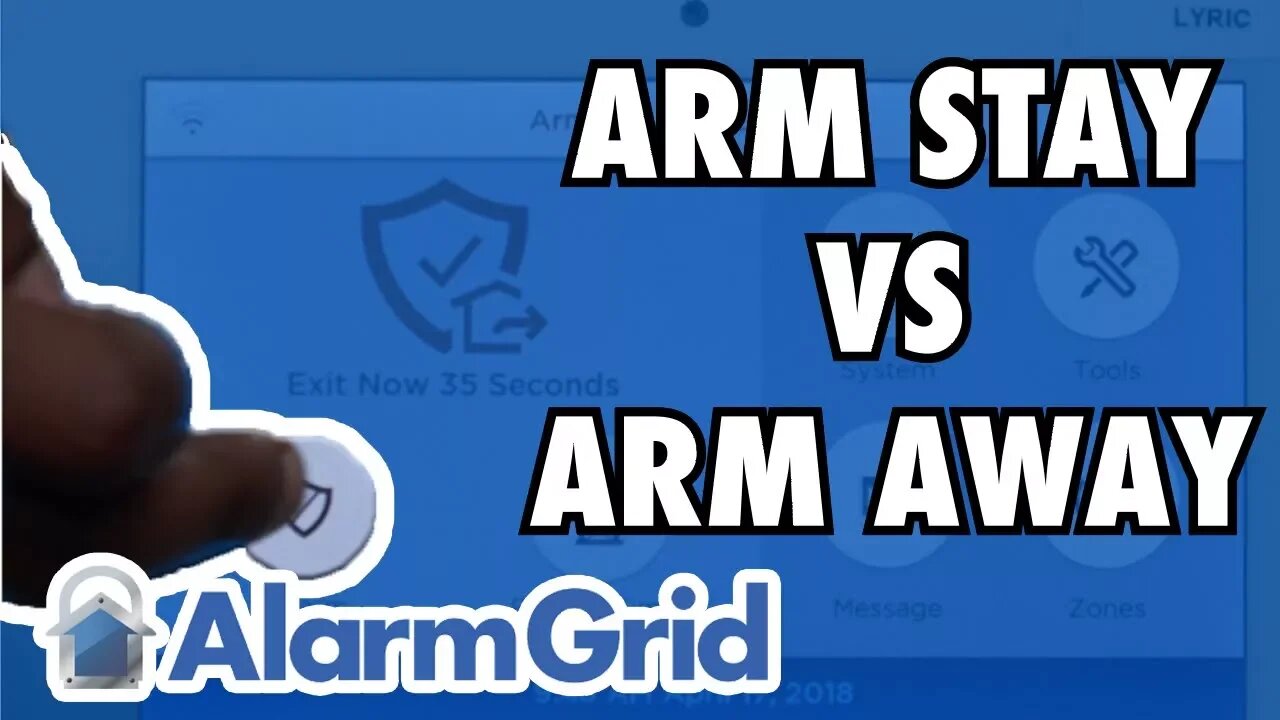Premium Only Content

Arm Stay vs Arm Away
In this video, Bryce discusses the differences between arm stay and arm away on an alarm system. These are both arming functions that can send the security system into an alarm when a programmed sensor is activated. Some sensors will only trigger an alarm when the security system is set to arm away.
For the sake of simplicity, a user will only need to think about three different states that their alarm system can be placed in. These are disarmed, armed stay and armed away. A system in a disarmed state will usually only trigger an alarm if a sensor with a very specific response type is activated. For example, a disarmed system will usually only activate an alarm if a life-safety sensor, such as a smoke detector, is activated, or if a panic button is pressed. A disarmed system can also cause an alarm if a 24-hour sensor is activated. This could be an emergency door or window that would never be opened otherwise.
However, when the system is armed, that means that certain sensors wouldn't normally be activated. The only way that these sensors would activate while the system is armed is if there is some type of break-in. Armed stay means that a user is on-site, but they do not anticipate anyone entering or exiting the property. When the system is set to armed stay, a user can activate interior sensors, such as indoor motions, and not have to worry about setting off an alarm. But if a perimeter sensor or an entry/exit sensor is activated by someone trying to break-in, then an alarm will occur on the system.
Meanwhile, a system set to arm away means that nobody is on-site and that interior sensors should not be activated. A system will trigger an alarm if a perimeter sensor is activated or if an interior sensor is activated. However, if an entry/exit sensor is activated, then an alarm will not immediately occur. Instead, the system will need to be disarmed within the system's programmed entry delay period before an alarm will occur.
Additionally, if the system is set to arm away, and an entry/exit sensor is first activated before an interior sensor is activated, then an alarm will not immediately occur. This way, a user can activate an entry/exit sensor and walk past a motion sensor to get to the keypad to disarm the system. However, the system will still need to be disarmed within the entry delay period, or else an alarm will still occur.
-
 3:39
3:39
Alarm Grid Home Security DIY Videos
1 year agoQolsys IQ Panel 4: Using Dual Path Monitoring
21 -
 2:42:10
2:42:10
TimcastIRL
8 hours agoTrump To SHUTTER 120 IRS Offices In MASS PURGE, Democrat LEAKED Tax Info w/Mike Crispi | Timcast IRL
150K50 -
 3:21:29
3:21:29
Alex Zedra
7 hours agoLIVE! New Game | R.E.P.O
36.9K1 -
 1:52:42
1:52:42
Kim Iversen
9 hours ago💰 CHA-CHING! 💰 Trump Unveils Big Money Plans For Gaza AND America
51.1K120 -
 1:05:28
1:05:28
Flyover Conservatives
21 hours agoUkraine’s Dirty Secret: The Christian Persecution No One Wants to Talk About - Alex Newman | FOC Show
52.7K19 -
 2:00:20
2:00:20
Glenn Greenwald
14 hours agoThe View from Moscow: Key Russian Analyst Aleksandr Dugin on Trump, Ukraine, Russia, and Globalism | SYSTEM UPDATE #414
131K64 -
 1:10:55
1:10:55
Donald Trump Jr.
11 hours agoBREAKING NEWS: My Father Revokes Biden-Maduro Oil License, LIVE with Maria Corina Machado | Triggered Ep.220
203K194 -
 1:25:29
1:25:29
Sarah Westall
10 hours agoX-Files True History, Project Blue Beam, Cabal Faction War w/ Former FBI Agent John DeSouza
80.5K16 -
 7:03:49
7:03:49
Dr Disrespect
17 hours ago🔴LIVE - DR DISRESPECT - NEW PC VS. DELTA FORCE - MAX SETTINGS
167K27 -
 49:04
49:04
Lights, Camera, Barstool
1 day agoIs The Monkey The Worst Movie Of The Year?? + Amazon Gets Bond
75.1K4